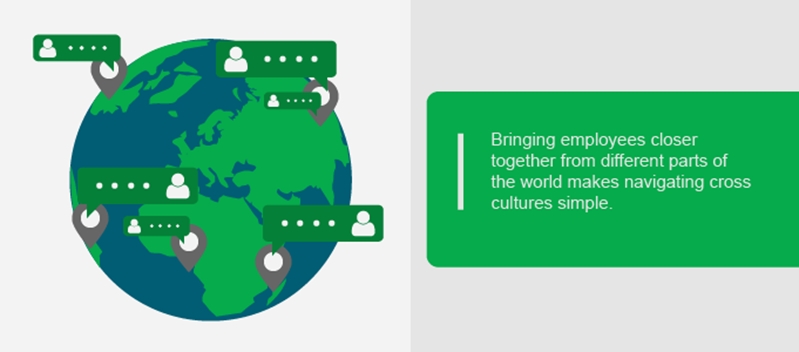
Technology has opened the world's doors. No longer in the realm of big business, all companies have the potential to go global and source talent from all four corners of the globe.
However, with international clout comes the requirement to navigate international cultures.
Body language and cultural cues contribute hugely to how people communicate, and this unspoken information has the power to make or break business relationships, especially when only limited forms of communication exist. For remote workers, taking advantage of unified communications may provided the perfect remedy.
Culture is part of a person's identity, so understanding how it affects behaviour in a business environment is key.
Why do cultural differences matter?
Yale School of Management offers a few examples where communication can go awry. In some cultures, talking over each other or interrupting during conversation is normal, while in others the rule is to wait before responding. Another example is that for some cultures, when discussing matters over the phone, it's common to follow up with an email or message summarising the main points. For other cultures, this can be interpreted as one party not trusting the other.
Add the virtual workspace into the mix, and employees can't rely on subtle physical cues to smooth over these misunderstandings. In the case of remote or international workers, this is a problem that needs to be navigated with care.
How are different cultures shaped?
Culture is a multi-faceted part of a person's identity, so understanding how it affects behaviour - especially in a business environment - is key. Professor Geert Hofstede, a world leader in studying cultures in the workplace, highlights six social dimensions that influence a culture's behaviour:
- Power distance: The degree to which people adhere to a 'power hierarchy' between powerful and less-powerful members of society.
- Individualism versus collectivism: The extent at which people see themselves as 'I' versus 'we'.
- Tough versus tender: How competitive or cooperative people are.
- Uncertainty avoidance index: How a society deals with the unknown or unpredictable and their attitude to controlling their future.
- Long term versus short term orientation: How strongly a person is connected to the past or tradition, compared to how they prepare for the future.
- Indulgence versus restraint: How people relate to gratification and having fun.
Each culture carries a blend of these six dimensions, according to Hofstede - a rich tapestry that paints a global picture. In a business sense, perhaps it's better to refer it to as a mosaic. Each employee carries their own colour based on their identity. Combined, they make a picture. When the pieces are scattered, it can be hard to bring them together in a way that doesn't clash.

How can technology improve cross-cultural communication?
Virtual communication - relying on technology to bridge the face-to-face gap - has been making leaps and bounds in recent years to bring employees closer together.
Companies should be interested in building trust between employees, not breaking it down.
Companies should be interested in building trust between employees, not breaking it down as in the above example. This is where unified communication steps in. By bringing communication platforms together, such as email, phone, text, video and even screen sharing, there's no longer a need to recap or follow up on conversations as they all take place in the same space. The added advantage is that these conversations are recorded and stored either internally or on the cloud, so there's no need to reconfirm what's being said.
Bringing employees closer together from different parts of the world makes navigating cross cultures simple. With the likes of Fonality's Heads Up Display, all communication platforms are pooled together into a single, unified system.
To find out more, get in touch with the team at Fonality today.


